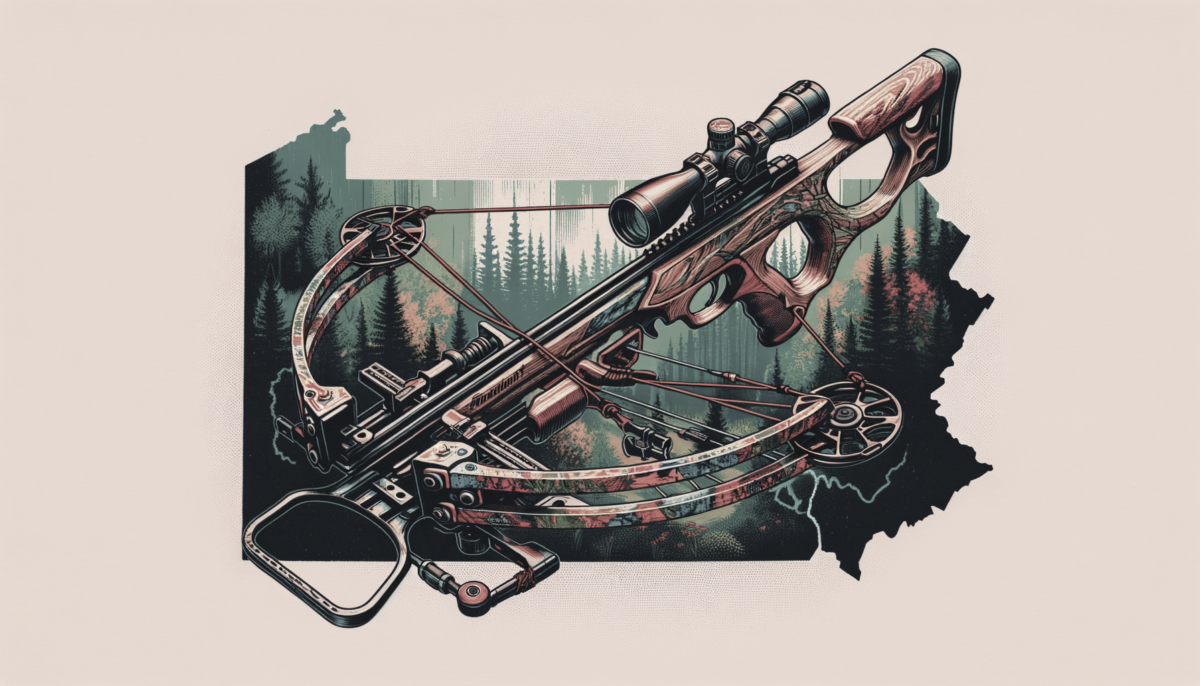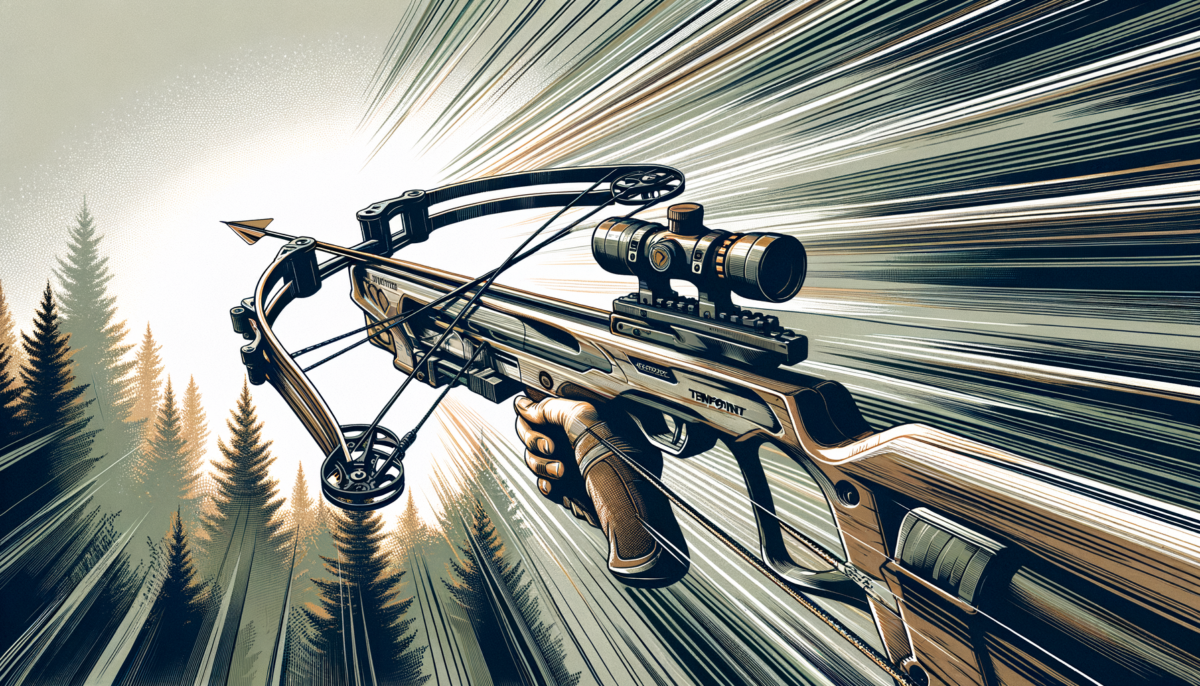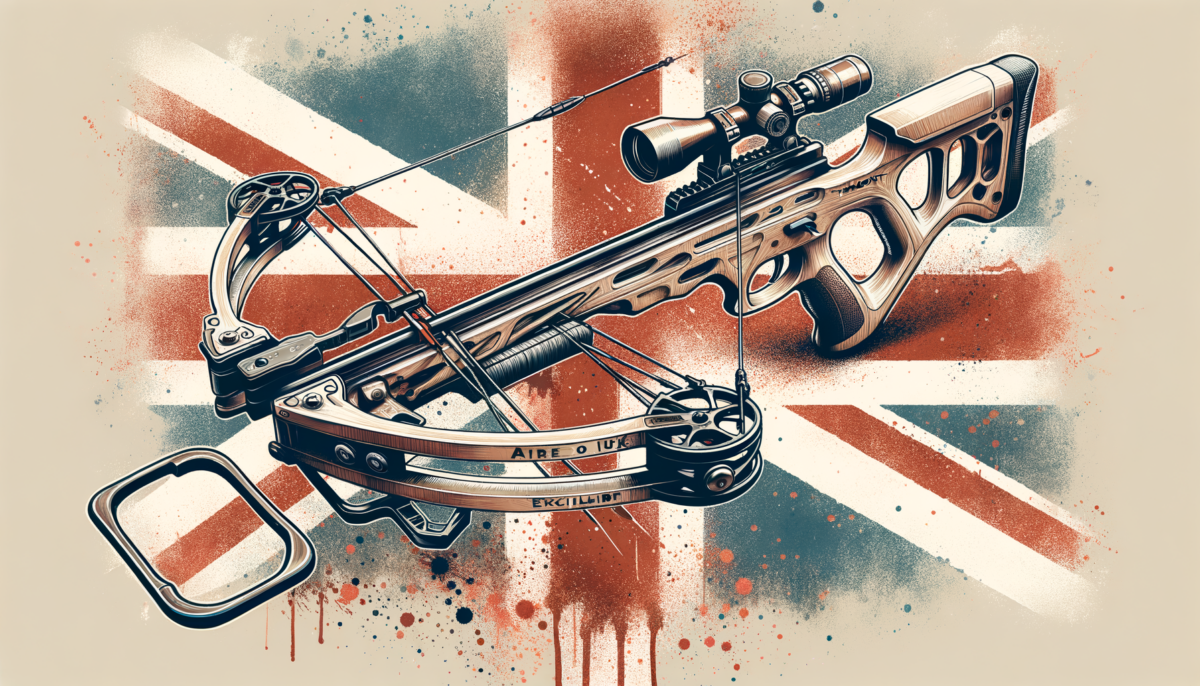Ever wondered what are the best strings for your crossbow and how they can impact your accuracy and hunting success? You’re in the right place to find out! We cover everything from the basics of crossbow strings to choosing the ideal type for your archery adventures.
Ready to discover your crossbow’s full potential? Dive into our guide that’s spot-on for your needs.
Key takeaways
- Crossbow strings vary by type and should match the style and setup of your crossbow.
- Material properties influence string performance, affecting both shooting accuracy and equipment longevity.
- Maintenance and proper care are crucial for preserving the quality of your crossbow string.
What are the Types of Crossbow Strings?
Crossbow strings come in a variety of materials, each with unique properties designed to optimize your shooting experience. Different styles of crossbows require specific string types to ensure maximum performance and longevity. Let’s break it down:

Based on Crossbow Style:
- Recurve Crossbow Strings: Made from dacron material, especially for wooden limbs, due to their ability to absorb energy efficiently.
- Teardrop Crossbow Strings: Typically feature mid-sized loops and are shorter, using dacron to compensate for the steel cables’ lack of shock absorption.
- Compound Crossbow Strings: Attach directly to the cam, with the material choice of dacron or dyneema like D97, depending on whether the crossbow has steel or synthetic cables.
Picking the right string is crucial, as the wrong choice can lead to damage to both bow and string, or simply result in subpar performance. Understanding your crossbow’s design will guide you to the ideal string material.
“Archery is more than just about selecting the right string; it’s a practice that sharpens your focus, improves coordination, and strengthens the body. With the right equipment and a committed mindset, archery can be both a meditative and thrilling experience.”
From my personal experience, I’ve always found that selecting the right crossbow string material is just as important as choosing the right crossbow itself. While I’m not claiming to be an expert, the type of string you choose really can make a world of difference. Whether you’re after better resistance to abrasion, strength, or less weight, each aspect plays a key role in your shooting success.
I’m definitely not too keen on guessing when it comes to my gear—it’s game on with the right equipment. If I’m unsure, I reach out to manufacturers or consult with knowledgeable people at the local archery shop for their thoughts. Bottom line, getting the right advice means hitting bullseye on your target—literally.
Barnett Whitetail Hunter II

Barnett Whitetail Hunter II
Choosing the Right Crossbow String Material
The crossbow string you select can have a significant impact on your archery experience. The right string material enhances performance, ensures durability, and fits the style of crossbow you’re using.

Recurve Crossbow Strings
For recurve crossbows, dacron material is usually the go-to for bows with wooden limbs. This material’s elasticity is essential since it absorbs much of the energy produced during firing, protecting the limbs. For crossbows with reinforced tips, however, a shift to D97 or similar dyneema materials can lead to better results, boosting performance without risking damage.
Teardrop Crossbow Strings
Teardrop designs combine features of recurve and compound crossbows but have distinct needs due to their structure and steel cables. Dacron strings are typically used here, as they compensate for the shock that the steel cables do not absorb.
Compound Crossbow Strings
A compound crossbow’s modern design calls for strings that can handle its dynamics. If the crossbow has steel cables, dacron strings are crucial to protect the bow. For synthetic cables, shooters will find dyneema materials like D97 enhance their shooting experience by improving both speed and stability.
String Properties and Function
A string’s weight, strength, and resistance to wear are critical. A gram of extra mass in the center of the string can slow an arrow down significantly compared to extra weight at the ends. Proper understanding and selection of bowstring material can have a substantial impact on your crossbow’s accuracy and longevity.

Importance of String Maintenance
Maintaining your bowstring is vital. Regular checks for signs of wear can save you from a failed string mid-hunt or during competition. Ensure that the string is correctly waxed and stored to extend its life and maintain performance.
Serving Your Bowstring
Adding serving to a bowstring aids in protecting the most vulnerable parts from wear. The areas around the nocking points are particularly prone to damage, so this more thread wrapping is not just beneficial but usually essential for a string’s lifespan.
Crossbow strings play a foundational role in the efficacy and lifespan of your equipment. From recurve to teardrop and compound crossbows, the right choice of string material is paramount. Be mindful of the specific needs dictated by the style of your bow, and don’t underestimate the importance of regular maintenance.
Choosing the right crossbow string involves understanding multiple facets—from the type of crossbow you own to the advantages and disadvantages of various materials. Check out our selection of high-quality crossbow accessories to find the right fit for your bow.
Crossbow hunting regulations can differ widely depending on your location. Stay up to date with local crossbow laws to ensure your hunting practices are always within legal boundaries.
Before we present the data table, it’s important to understand the properties and influences of different bowstring materials. The table below showcases the characteristics of the most commonly used materials in crossbow strings, providing a direct comparison to help you select the perfect option for your bow.
| String Material | Strength Per Strand | Stretch % | Weight (Mass Effect) | Durability | Water Resistance |
|---|---|---|---|---|---|
| Dacron | 22.5 kg (50 lb) | 2.6% | Moderate | High | Moderate |
| Kevlar/Vectran | 31.8 kg (70 lb) | 0.8% | Low | Medium | High |
| Spectra/Dyneema | 45.5 kg (100 lb) | 1.0% | Low | High | High |
Different materials yield distinct performance characteristics, each suited to varying crossbow designs and user requirements.
Comparative overview of commonly used crossbow string materials highlighting their key features for an informed selection.
More Archery Tips
Improving your archery skills involves more than just selecting the right crossbow string. Here’s a rundown of more tips to help you sharpen your abilities and ensure a true shot every time you aim.
- Regularly practice your shooting stance for stability and consistency.
- Focus on breath control to reduce movement and improve focus.
- Consistently check your bow’s brace height and adjust as necessary.
- Practicing at varying distances can help improve your range accuracy.
- Utilize archery targets to simulate different scenarios and angles.
- Always ensure your crossbow bolts are in good condition.
- Keep a shooting journal to track progress and identify areas for improvement.
- Consider using a crossbow scope to enhance accuracy at longer distances.
When pursuing archery, there are some clear dos and don’ts that can impact your performance and safety. The following table outlines key practices to follow and to avoid.
| Do | Don’t |
|---|---|
| Wax your string regularly. | Neglect inspecting your equipment. |
| Follow proper safety procedures. | Use damaged or sub-standard gear. |
| Store your bow and strings correctly. | Dry-fire your crossbow. |
| Use the correct arrow for your bow. | Forget to update yourself on regulations. |
| Seek professional guidance if unsure. | Ignore signs of wear or damage. |
Essential considerations for maintaining performance and safety in archery.
Advantages and Disadvantages of Archery
Archery is a sport and hunting practice with its own set of benefits and drawbacks, much like any other discipline. Let’s consider the ups and downs to provide you with a comprehensive outlook.
Advantages
- Improves hand-eye coordination and focus.
- Offers a meditative experience that can reduce stress.
- Strengthens upper body muscles through regular practice.
- Provides a sense of accomplishment with skill progression.
- Can be practiced indoors or outdoors, making it versatile.
Disadvantages
- Quality archery equipment can be expensive.
- Requires significant time commitment to improve.
- Not all regions have accessible archery ranges or natural environments suitable for the sport.
- Poor technique can lead to muscle strain or injury.
- Some people may not have the patience archery usually demands.
If you are a visual learner, check out this video titled ‘Fastest Explanation of different bow string materials?’
Frequently Asked Questions (FAQ)
How usually should I replace my crossbow string?
Crossbow strings should be replaced when you notice significant wear or at least every two years. However, this frequency can vary depending on how usually you use the crossbow and the string material’s durability; some modern materials may have a longer lifespan.
Can I use any crossbow string for my bow’s make and model?
Not all crossbow strings are universal. It’s essential to use a string that is specifically designed for your crossbow’s make and model to ensure safety and optimal performance.
Is there any special maintenance needed for different types of crossbow strings?
Different materials require varying levels of care. For instance, a traditional string like dacron may need more frequent waxing, while modern synthetic materials may be more resistant to wear. Always follow the manufacturer’s guidance on maintenance for your specific crossbow string.
Final thoughts
To wrap it up, understanding the intricacies of crossbow strings is central to capably harnessing your crossbow’s potential and ensuring a lasting bond between you and your equipment. By choosing the suitable material and staying on top of maintenance, you can enjoy the thrill of archery with confidence and precision.
How has your experience been with different crossbow strings, and do you have any personal favorites or cautionary tales? Did I cover everything you wanted to know? Let me know in the comments section below—I read and reply to every comment. If you found this article helpful, share it with a friend, and check out my full blog for more tips and tricks on archery and hunting. Thanks for reading and keep hitting your mark!













